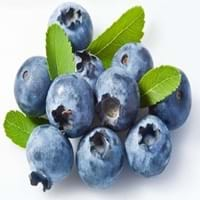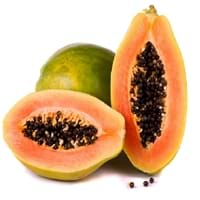Health Benefits
Cancer prevention, Cures gastro-intestinal troubles, Improves night vision, Improves stomach health, Prevents diabetes, Prevents high blood pressure, Reduces blood circulation problems
Arthritis prevention, Asthma treatment, Cancer prevention, Heart care, Prevents macular degeneration, Prevents rheumatoid
General Benefits
Fights against infections, Helps in weight loss, Prevents blood clotting in vessels, Treatment of urinary tract infections
Anti-inflammatory properties, Boosts immune system, Digestive aid, Healing of wounds, Maintains healthy cholesterol level, Strengthens bones
Skin Benefits
Anti-aging benefits, Nourishes skin, Protects against skin damage
Anti-aging benefits, Hydrates skin, Skin revitalization, Treatment of acne, Treatment of dark spots
Hair Benefits
Prevents hair loss
Good conditioner, Promotes longer and healthier hair, Softening mask, Treatment of dandruff
Allergy Symptoms
Not Available
Abdominal pains, Carotenemia on excessive consumtion, Latex Allergy
Side Effects
Decrease in blood sugar levels, Diarrhoea, Dizziness, Headache, Internal bleeding, Stomach pain
Allergic reaction, Skin problems, Possibly unsafe during pregnancy
Best Time to Eat
As a snack in the late afternoon, Don't consume at night and before bed, Eat the fresh ones, avoid mixing with any other foods, don't eat after meal., Morning time (before lunch)
As a snack in the late afternoon, Don't consume at night and before bed, Don't eat after meal
Vitamin B5 (Pantothenic Acid)
Vitamin C (Ascorbic Acid)
Vitamin K (Phyllochinone)
Calories in Fresh Fruit with Peel
Not Available
Calories in Fresh Fruit without Peel
Not Available
Calories in Frozen Form
Not Available
Calories in Dried Form
Not Available
Calories in Canned Form
Not Available
Type
Berry
Melon, Tree fruit
Season
Summer
All seasons
Varieties
Dwarf bilberry, Piper, bog blueberry, Northern bilberry, Mountain bilberry and Oval-leaved bilberry
Coorg Honey Dew, Pusa Dwarf, Pusa Giant, Pusa Majesty, Pusa Delicious, Pusa Dwarf, Solo, Ranchi, Taiwan-785 and Taiwan-786
Color
Dark purple
Orange, Yellow
Inside Color
Light Green
Orange
Taste
Sweet
Luscious, Sweet
Origin
Unknown
Mexico, Central America
Soil Type
Moist, Well-aerated
Rocky, Sandy, Well-drained
Climatic Conditions
Cold
Warm, Without frosts
Facts about
- Bilberries are used in manufacturing of alcoholic drinks.
- They are used to improve aromas of sorbets.
- The green extract of it's leaves is used in textile industry as natural dye.
- Papaya seeds show contraceptive effects in male monkeys.
- Their seeds are used as a replacement for black pepper in some nations due to peppery taste.
- Papaya is known by funny names like paw paw or papaw and the mamao.
Other Countries
Denmark, Finland, Iceland, Sweden
Brazil, Indonesia, Mexico, Nigeria
Top Importer
United States of America
United States of America
Top Exporter
Chile
Mexico
Botanical Name
Vaccinium myrtillus
Carica papaya
Synonym
blaeberry, whinberry, European blueberry, whortleberry
Not Available
Subkingdom
Tracheobionta
Tracheobionta
Division
Magnoliophyta
Magnoliophyta
Class
Magnoliopsida
Magnoliopsida
Subclass
Dillenhidae
Dillenhidae
Order
Ericales
Brassicales
Family
Ericaceae
Caricaceae
Species
Vaccinium myrtillus
C. papaya
Generic Group
Heath
Papaya
Compare Bilberry and Papaya
It is important compare Bilberry and Papaya as both the fruits have a different nutritional value. Their comparison can be done on the basis of their vitamin and mineral content, calories, benefits as well as characteristics, making it easier for us to choose the best fruit for our diet. Their general health benefits are as follows:
Bilberry Benefits: fights against infections, helps in weight loss, prevents blood clotting in vessels and treatment of urinary tract infections.
Papaya Benefits: anti-inflammatory properties, boosts immune system, digestive aid, healing of wounds, maintains healthy cholesterol level and strengthens bones.
Fruits are also used as a remedy for various hair problems. The hair benefits of Bilberry are: prevents hair loss and hair benefits of Papaya are: good conditioner, promotes longer and healthier hair, softening mask and treatment of dandruff. Some fruits are known to cause allergic reactions. The allergy symptoms of first fruit are: not available and the symptoms of second fruit are: abdominal pains, carotenemia on excessive consumtion and latex allergy. Get sorted Bilberry vs Papaya comparison with the help of fruit comparison tool by fruitvs.com.









